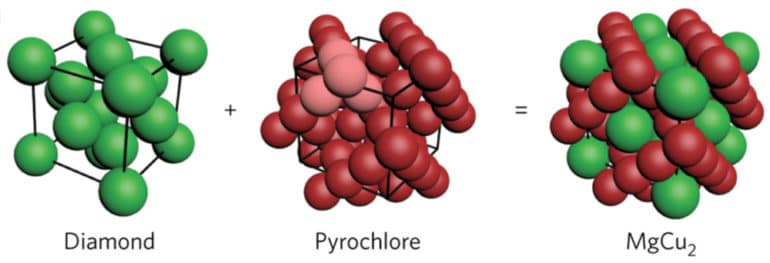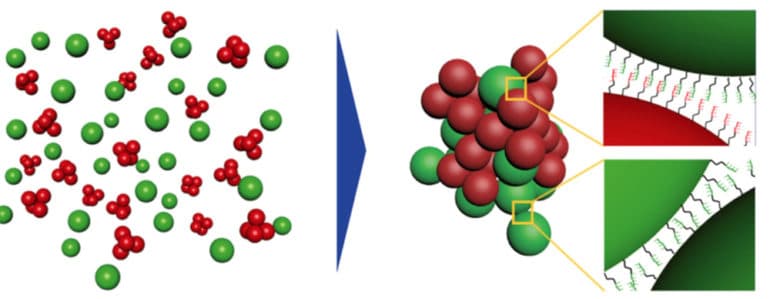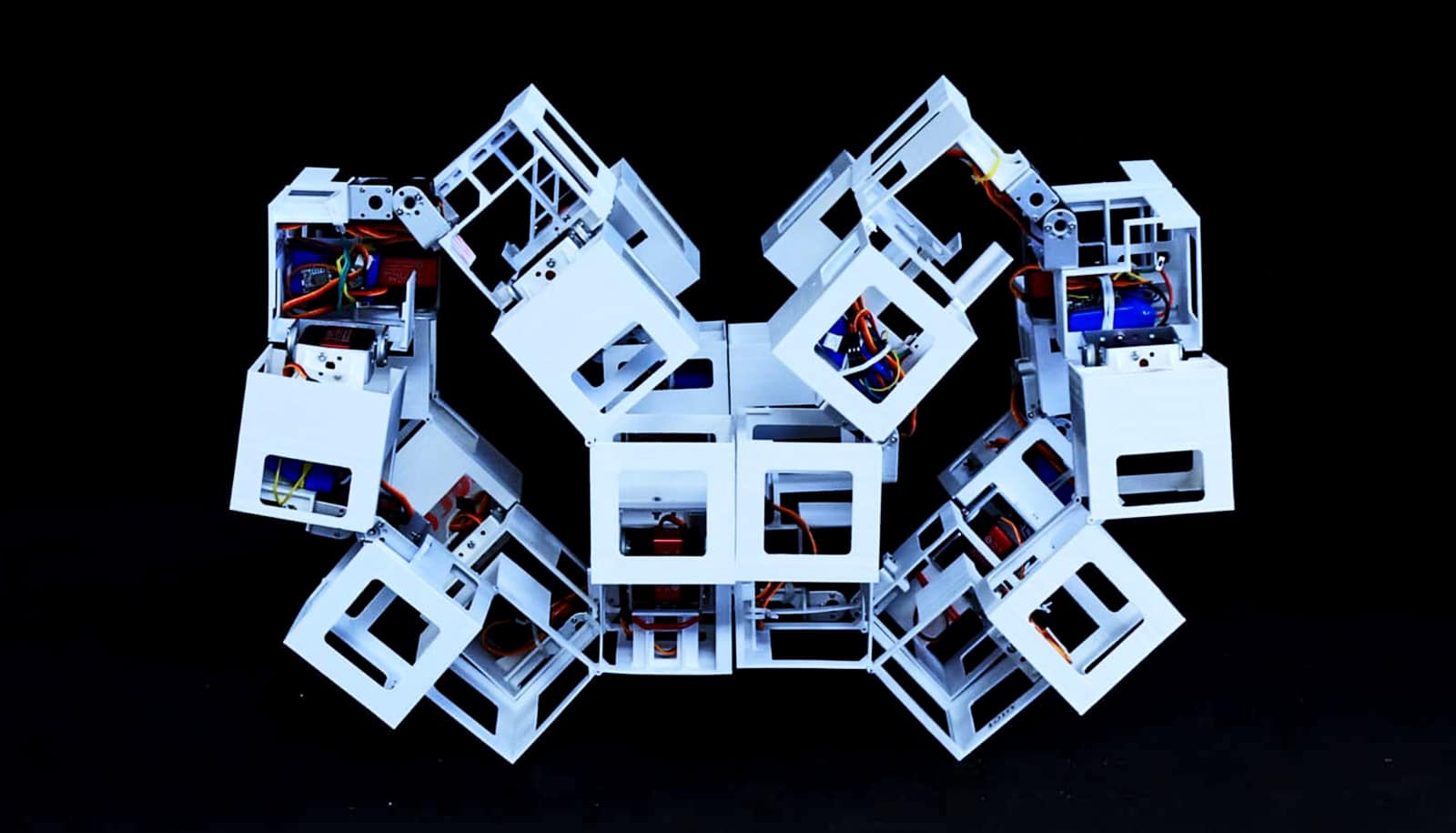Scientists have worked for decades to get colloidal spheres to arrange themselves in sparser lattices, which would unleash potentially valuable optical properties. The structures, called photonic crystals, could increase the efficiency of lasers, make optical components even smaller, and increase engineers’ ability to control the flow of light.
Now, researchers report a pathway toward the self-assembly of these elusive photonic crystal structures never assembled before on the sub-micrometer scale.
The research, which appears in the journal Nature Materials, introduces a new design principle based on preassembled components of the desired superstructure, much as a prefabricated house begins as a collection of pre-built sections. The researchers report they were able to assemble the colloidal spheres into diamond and pyrochlore crystal structures—a particularly difficult challenge because so much space is left unoccupied.


The team took inspiration from a metal alloy of magnesium and copper that occurs naturally in diamond and pyrochlore structures as sub-lattices. They saw that these complex structures could be decomposed into single spheres and tetrahedral clusters (four spheres permanently bound). To realize this in the lab, they prepared sub-micron plastic colloidal clusters and spheres, and employed DNA segments bound to their surface to direct the self-assembly into the desired superstructure.
“We are able to build those complex structures because we are not starting with single spheres as building blocks, but with pre-assembled parts already ‘glued’ together,” says Etienne Ducrot, a postdoctoral researcher at the New York University Center for Soft Matter Research. “We fill the structural voids of the diamond lattice with an interpenetrated structure, the pyrochlore, that happens to be as valuable as the diamond lattice for future photonic applications.”
Ducrot says open colloidal crystals, such as those with diamond and pyrochlore configurations, are desirable because, when composed of the right material, they may possess photonic band gaps—ranges of light frequency that cannot propagate through the structure—meaning that they could be for light what semiconductors are for electrons.
These sparkly critters beat science to biophotonic crystals
“This story has been a long time in the making as those material properties have been predicted 26 years ago but until now, there was no practical pathway to build them,” he says. “To achieve a band gap in the visible part of the electromagnetic spectrum, the particles need to be on the order of 150 nanometers, which is in the colloidal range. In such a material, light should travel with no dissipation along a defect, making possible the construction of chips based on light.”
Coauthor David J. Pine, chair of the chemical and biomolecular engineering department at NYU Tandon School of Engineering, says that self-assembly technology is critical to making production of these crystals economically feasible because creating bulk quantities of crystals with lithography techniques at the correct scale would be extremely costly and very challenging.
“Self-assembly is therefore a very appealing way to inexpensively create crystals with a photonic band gap in bulk quantities,” says Pine, also professor of physics at NYU.
Additional coauthors are Mingxin He of NYU Tandon and Gi-Ra Yi of Sungkyunkwan University of Chemical Engineering in the Republic of Korea. The US Army Research Office funded the work under a Multidisciplinary University Research Initiative grant.
Source: New York University



